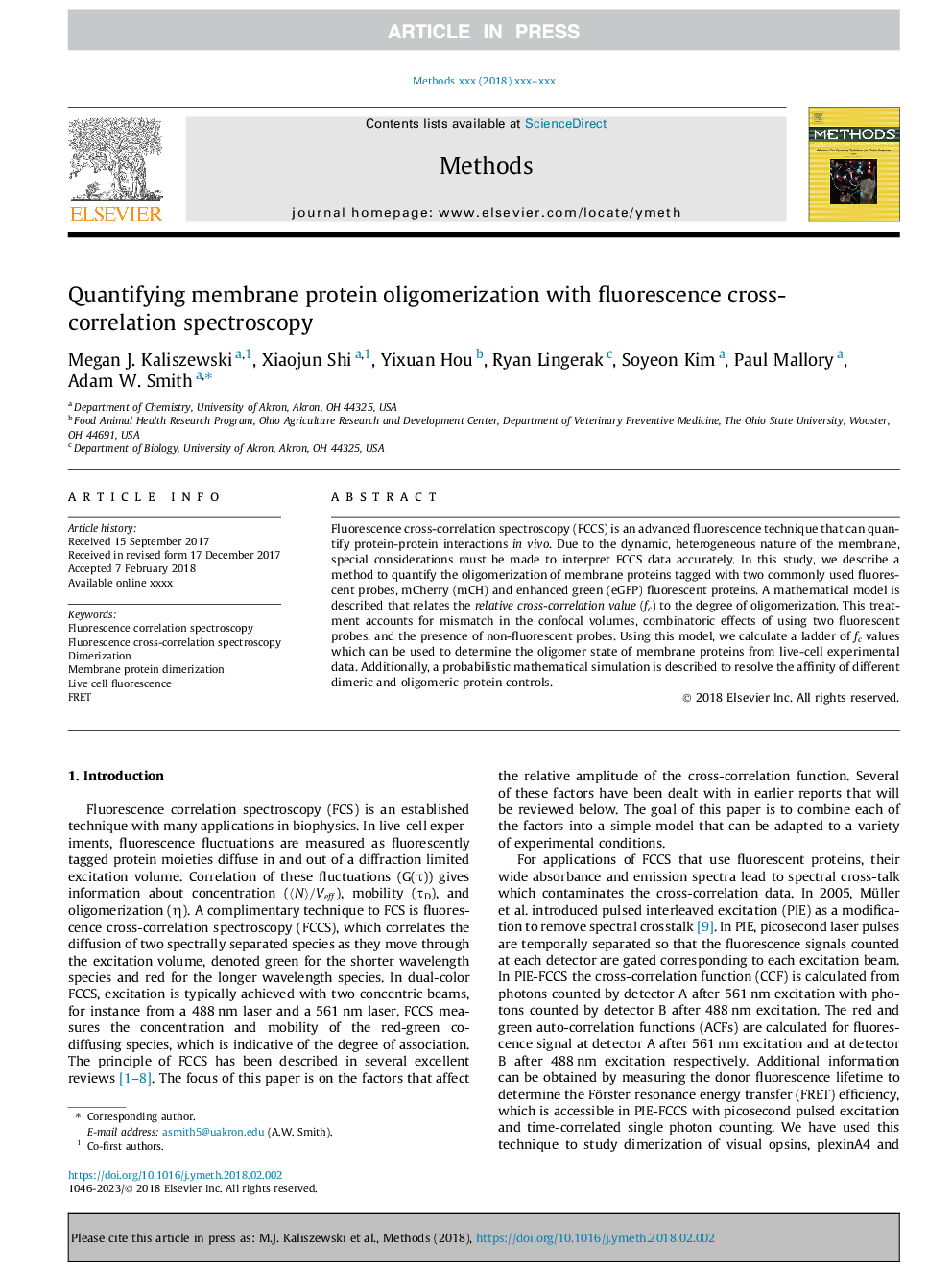| Article ID | Journal | Published Year | Pages | File Type |
|---|---|---|---|---|
| 8340053 | Methods | 2018 | 12 Pages |
Abstract
Fluorescence cross-correlation spectroscopy (FCCS) is an advanced fluorescence technique that can quantify protein-protein interactions in vivo. Due to the dynamic, heterogeneous nature of the membrane, special considerations must be made to interpret FCCS data accurately. In this study, we describe a method to quantify the oligomerization of membrane proteins tagged with two commonly used fluorescent probes, mCherry (mCH) and enhanced green (eGFP) fluorescent proteins. A mathematical model is described that relates the relative cross-correlation value (fc) to the degree of oligomerization. This treatment accounts for mismatch in the confocal volumes, combinatoric effects of using two fluorescent probes, and the presence of non-fluorescent probes. Using this model, we calculate a ladder of fc values which can be used to determine the oligomer state of membrane proteins from live-cell experimental data. Additionally, a probabilistic mathematical simulation is described to resolve the affinity of different dimeric and oligomeric protein controls.
Keywords
Related Topics
Life Sciences
Biochemistry, Genetics and Molecular Biology
Biochemistry
Authors
Megan J. Kaliszewski, Xiaojun Shi, Yixuan Hou, Ryan Lingerak, Soyeon Kim, Paul Mallory, Adam W. Smith,
